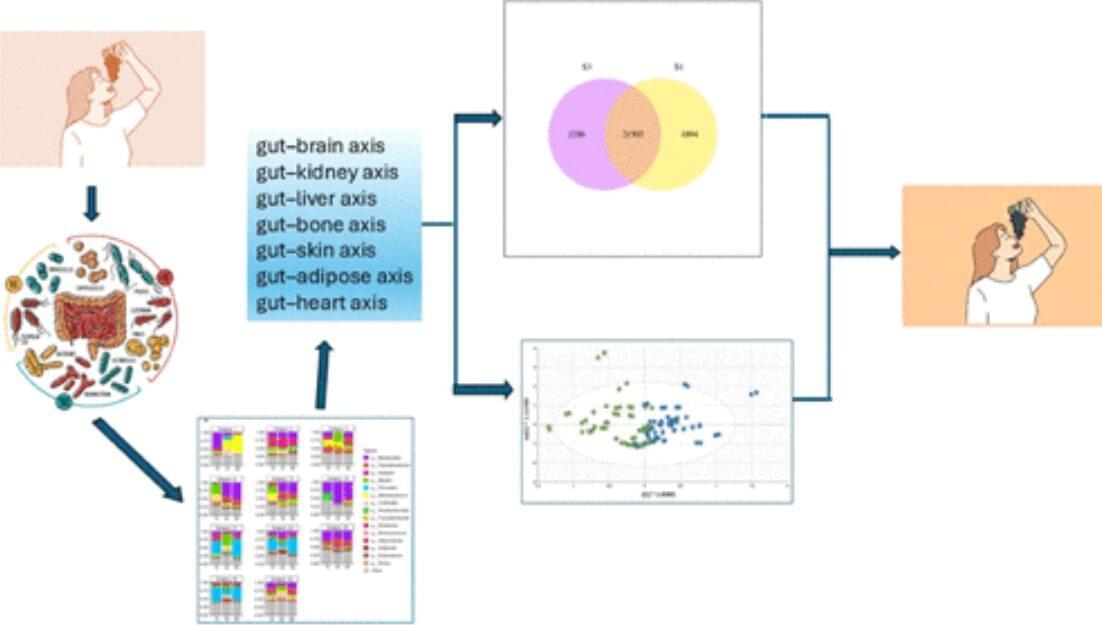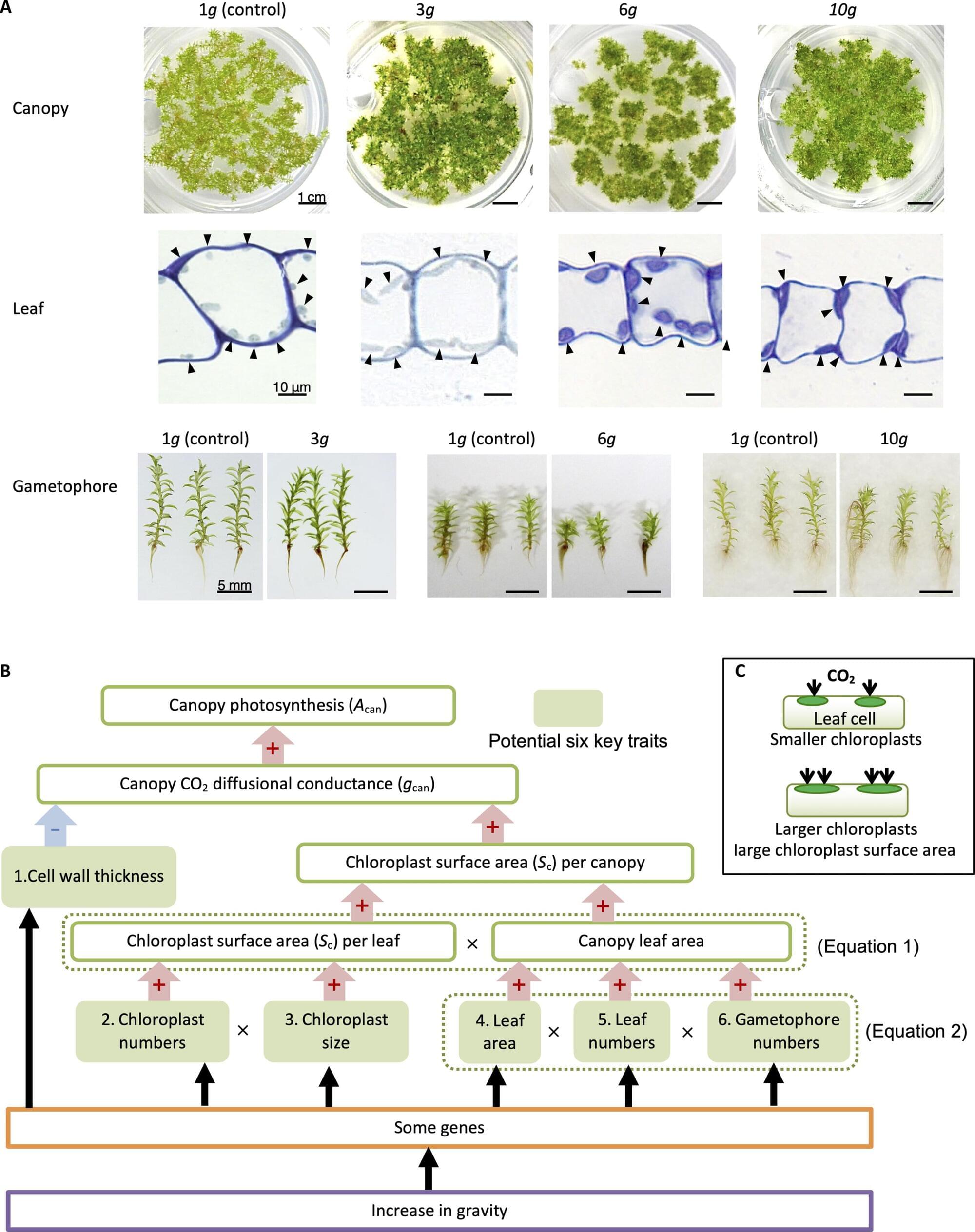Researchers developed edible microbeads made from green tea polyphenols, vitamin E and seaweed that, when consumed, bind to fats in the gastrointestinal tract.
Category: food – Page 14

New formula improves accuracy of particle concentration measurements in diverse samples
Researchers can use a metric called the particle number concentration (PNC) to calculate the number of particles in a sample, such as the number of marbles in a jar.
Researchers at the National Institute of Standards and Technology (NIST) have developed a new mathematical formula to calculate the concentration of particles suspended in a solution. The new approach, which yields more accurate results than current methods, can be used to deliver the correct drug dosage to patients, measure the amount of nanoplastics in ocean water, and help ensure the correct level of additives in food products, among other applications.
The researchers have published their findings in Analytical Chemistry.
US reactor turns cow manure into jet fuel at fraction of normal cost
US startup turns cow manure into jet fuel in a move to reshape renewable energy.
Interestingly, the reactor does it all at just 1/100th the capital cost of conventional systems. The dramatic reduction in capital expenditure could make on-site fuel production a realistic prospect for individual farms.
Over 20,000 large livestock farms in the U.S. produce nearly a trillion pounds of manure annually, but less than 6% capture the biogas from this waste.
“Farmers in the U.S. and around the world are sitting on an untapped goldmine. We’re giving them the ability to turn waste into a profitable product that airlines desperately need,” said Dr. Stephen Beaton, CEO and Founder of Circularity Fuels, in the press release.

One Fruit, 1600 Compounds, Countless Health Benefits
Fresh grapes contain a potent mix of over 1,600 compounds that benefit heart, brain, skin, and gut health. New evidence suggests they deserve official superfood recognition, with benefits even at the genetic level.
A new article appearing in the current issue of the peer-reviewed Journal of Agriculture and Food Chemistry explores the concept of “superfoods” and makes a case that fresh grapes have earned what should be a prominent position in the superfood family. The author, leading resveratrol and cancer researcher John M. Pezzuto, Ph.D., D.Sc., Dean of the College of Pharmacy and Health Sciences at Western New England University, brings forth an array of evidence to support his perspective on this issue.
As noted in the article, the term “superfood” is a common word without an official definition or established criteria. Mainstream superfoods are typically part of the Mediterranean Diet and generally rich in natural plant compounds that are beneficial to a person’s health. Pezzuto addresses the broader topic of superfoods in detail, then makes the scientific case for grapes, noting that fresh grapes are underplayed in this arena and often not included with mention of other similar foods, such as berries.

The evolutionary maintenance of Lévy flight foraging
In heterotrophs, incuding animals, survival depends on the net energy gained through foraging. The expectation, then, is that natural selection results in adaptations for efficient foraging that optimize the balance of searching costs and rewards. Lévy flight foraging has been proposed as an optimal foraging solution. The hypothesis states, if no information about resource locations are available, and the locations are re-visitable, then selection will result in adaptations for Lévy flight foraging, a type of random walk. It has been argued that Levy-like foraging behaviour may simply reflect how resources are distributed, but empirical and theoretical research suggests that this behaviour is intrinsic or innate. However, this research does not address evolutionary mechanisms, and lacks ecological breadth. We extend the current theoretical framework by including evolutionary ecological contexts. We treat an organism’s random walk as a heritable trait, and explore ecological contexts such as population size, lifespan, carrying capacity, searching costs, reproductive strategies, and different distributions of food. Our evolutionary simulations overwhelmingly resulted in selection for Lévy-like foraging, regardless of the distribution of food, and evidences Lévy flight foraging as a bet-hedging strategy. Thus, here we provide some of the first evidence for the evolutionary maintenance of Lévy flight foraging.
Citation: Campeau W, Simons AM, Stevens B (2022) The evolutionary maintenance of Lévy flight foraging. PLoS Comput Biol 18: e1009490. https://doi.org/10.1371/journal.pcbi.
Editor: Marcos Gomes Eleuterio da Luz, Universidade Federal do Parana, BRAZIL.

Researchers track how iron deficiency disrupts photosynthesis in crucial ocean algae
The next time you breathe, consider this: Photosynthesis of algae, powered by iron dust in the ocean, made it possible.
Now, a Rutgers University study published in the Proceedings of the National Academy of Sciences pulls back the curtain on this vital process.
Iron is a critical micronutrient for marine phytoplankton, the microscopic algae that form the foundation of the ocean’s food webs. It is deposited into the world’s oceans as dust from deserts and arid areas as well as from glacial meltwater.

Agricultural sensor detects crops by their vibrations, offering an alternative approach for farm robots
Farmers might be able to get help tending and harvesting crops using a new sensing technology from Carnegie Mellon University’s Robotics Institute (RI). Researchers have invented a tool called SonicBoom that can find crops like apples based on the sound they make. The novel technology, still in the early stages of development, may someday be used by farm robots for tasks like pruning vines or locating ripe apples hidden among the leaves.
“Even without a camera, this sensing technology could determine the 3D shape of things just by touching,” said Moonyoung (Mark) Lee, a fifth-year Ph.D. student in robotics.
A paper describing this technology appears in IEEE Robotics and Automation Letters.

New Research Confirms Weight-Loss Drug Link With Sudden Vision Loss
Drugs such as Ozempic, Wegovy and Mounjaro (known as semaglutide and tirzepatide) have changed the way clinicians manage diabetes and obesity around the world.
Collectively known as GLP-1 agonists, these drugs mimic the hormone GLP-1. This limits both hunger and interest in food, helping users lose weight, and helps control blood sugar levels.
But two new studies published today show that people taking these drugs may have a small increased risk of serious eye conditions and vision loss.

Hypergravity boosts food production in moss species, Japanese study finds
Unless one is a trained fighter jet pilot, or a Formula 1 driver, humans tend not to do well at higher gravity, but tiny green moss plants seem to thrive under such conditions.
A team from Japan found that moss (Physcomitrium patens) exhibited increased photosynthesis under hypergravity conditions (six and 10 times Earth’s gravity) due to enhanced carbon dioxide (CO2) diffusion from the atmosphere into the chloroplasts within the plant leaves.
The plants adapt to the increased gravity by increasing the size of their chloroplasts and the number of leafy shoots of the moss (gametophores). Researchers identified for the first time the gene factor responsible for this response. They named the factor ISSUNBOSHI1 or IBSH1, a namesake of an inch-high, warrior boy from a beloved Japanese fairytale.

Scientists discover amino acid switch that turns fat into a calorie-burning furnace
Cutting calories doesn’t just slim you down—it also reduces cysteine, an amino acid that flips fat cells from storage mode to fat-burning mode. Researchers found that lowering cysteine sparks the conversion of white fat into heat-producing brown fat, boosting metabolism and promoting weight loss in both humans and animal models.